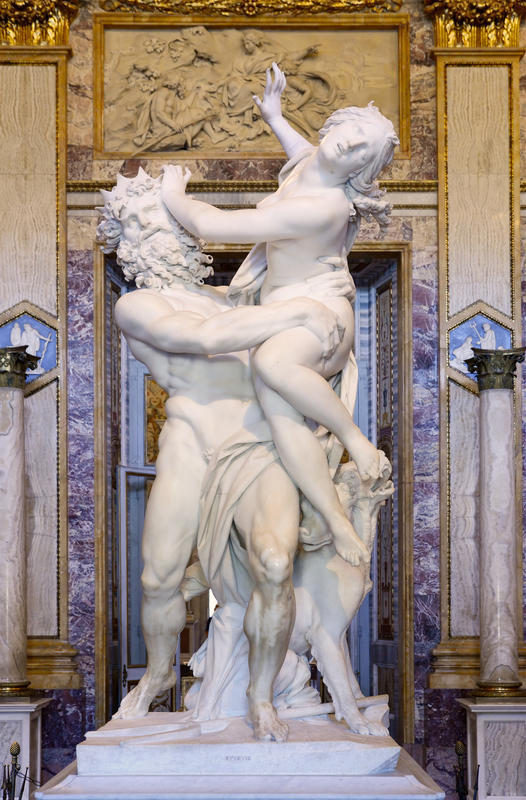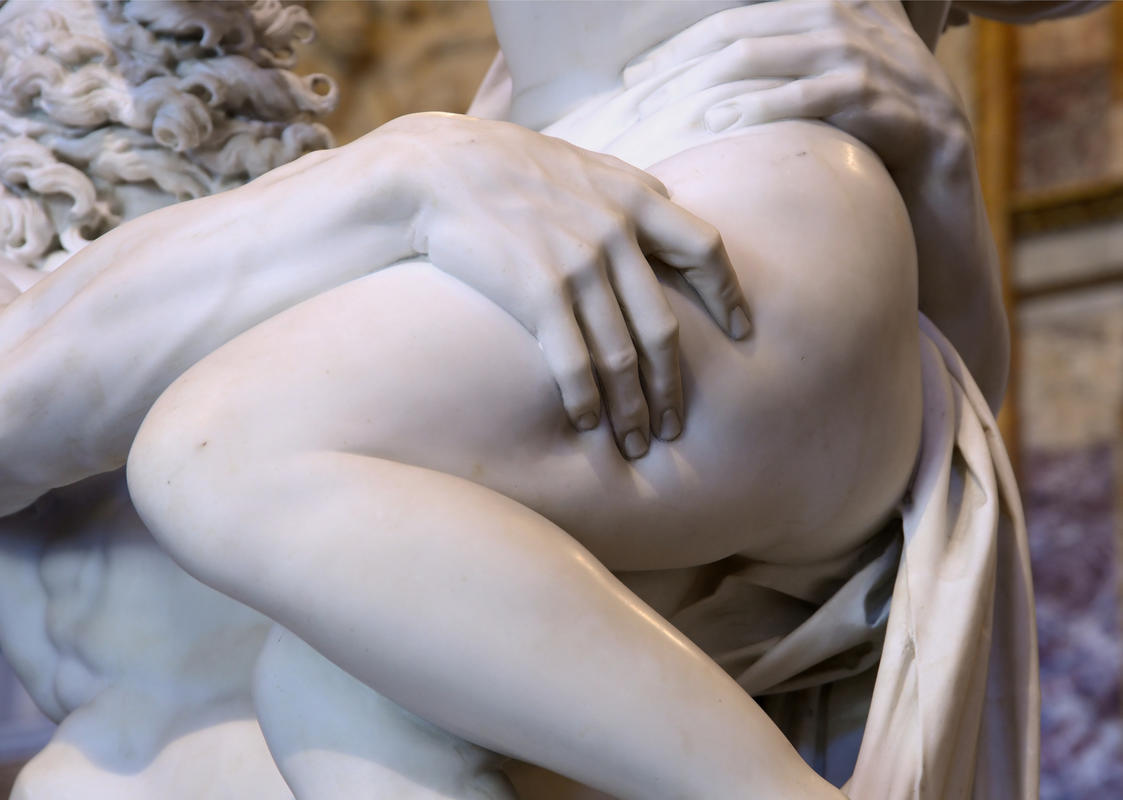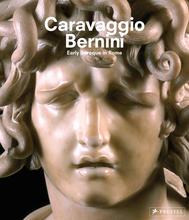More about The Rape of Proserpina
- All
- Info
- Shop

Contributor
In the story of the rape of Proserpina, Venus and Cupid compel the god of the underworld to fall in love with Mother Earth’s daughter, so the next obvious step is to steal her.
Definitely not to be confused with Jeff Koons’ expensive flower pot named after the same myth. The story describes holy negotiations that create seasons and is probably what Lorde is referencing when she sings about winter, our bodies are young a blue, of spurned and ended love.
Bernini didn’t take Lorde’s constructive approach to his own lost love, when his mistress spurned him for his brother, he tried to kill poor Luigi with both a crowbar and a sword (two separate attempts) and sent one of his servants to slash her face with a razor. That’s the kind of response that really is only ok in a Roman myth when it creates a new animal or something.
Every portrait is a self-portrait and spurned Pluto looks more than a little like Gian Lorenzo himself; a Freudian transference in the wrong direction my dude? Regardless, making a sculpture is way more productive than blind, homicidal rage.
The real question is why a Cardinal would be cool dropping a kilo and a half of gold coins on a rape statue. (Baroque but not broke, boi!!) Yeah yeah, Proserpina has more agency here than in the Koons but still. He didn’t think the Pope would notice maybe? Or he thought it would complement his pornography collection so well that he just didn’t care? Or maybe the expression of heterosexual lust was meant to mask his rumored affairs with other men?
Bernini was supposed to have been pretty funny but we’re not seeing any of that here. Just more evidence of men on the verge of psychotic breaks because the entirety of his self worth was invested in a woman’s willingness to screw him and a god that refuses to return his calls.
Sources
- Koons, Jeff. Pluto and Proserpina. 2010-2013, private collection. Jeff Koons: Antiquities, 2017. Accessed Aug 8, 2017. http://www.jeffkoons.com/artwork/antiquity/pluto-and-proserpina
- Mann, Richard G. 2005. “Borghese, Scipione Caffarelli (1576?-1633).” GLBTQ Archive, 2015. Accessed Aug 8, 2017. http://www.glbtqarchive.com/arts/borghese_sc_A.pdf
- Morris, Rodrick Conway and International Herald Tribune. June 13, 1998. “Rome Gathers Sculptures from the Master: Bernini the Magnificent.” New York Times. Accessed Aug 8, 2017. http://www.nytimes.com/1998/06/13/style/rome-gathers-sculptures-from-th…
- Ovid. The Metamorphses of Ovid. Translated by Allen Mandelbaum. Harcourt: New York, 1993.
- Schama, Simon. September 15, 2006. “When stone came to life.” The Guardian. Accessed Aug 8, 2017. https://www.theguardian.com/artanddesign/2006/sep/16/art
- White, Veronica. October 2003. “Gian Lorenzo Bernini (1598-1680).” The Met: Heilbrunn Timeline of Art History, 2017. Accessed Aug 8, 2017. http://www.metmuseum.org/toah/hd/bern/hd_bern.htm
- Wittkower, Rudolf. Gian Lorenzo Bernini: The Sculptor of the Roman Baroque. Cornell University Press: Ithica, 1981. Accessed Aug 8, 2017. https://books.google.com/books?id=CYZKAQAAIAAJ&focus=searchwithinvolume…
Featured Content
Here is what Wikipedia says about The Rape of Proserpina
The Rape of Proserpina (Italian: Ratto di Proserpina), more accurately translated as the Abduction of Proserpina, is a large Baroque marble group sculpture by Italian artist Gian Lorenzo Bernini, executed between 1621 and 1622, when Bernini's career was in its early stage. The group, finished when Bernini was just 23 years old, depicts the abduction of Proserpina, who is seized and taken to the underworld by the god Pluto. It features Pluto holding Proserpina aloft, and a Cerberus to symbolize the border into the underworld that Pluto carries Proserpina into.
Cardinal Scipione Borghese commissioned the sculpture and gave it to the newly appointed Cardinal-nephew, Ludovico Ludovisi, possibly as a means of gaining favour. The choice to depict the myth of Proserpina may relate to the recent death of Pope Paul V, or to the recent empowerment of Ludovico. Bernini drew heavy inspiration from Giambologna and Annibale Carracci for the sculpture, which is also the only work for which preparatory material survives. The Rape of Proserpina is made of rare Carrara marble, and was originally placed on a since-destroyed pedestal with a poem by Maffeo Barberini. It has been praised for its realism, as the marble mimics other materials like flesh. The detail is notable; for instance, a trickle of tears contributes to the expressiveness of Proserpina's face.
Check out the full Wikipedia article about The Rape of Proserpina















